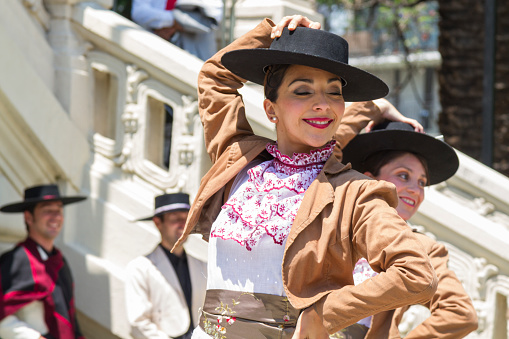
Sept. 15 began this year’s Hispanic Heritage Month, and, while we are already halfway through, there are still plenty of ways to celebrate.
From its flavorful cuisine to stunning landscapes, Hispanoamérica showcases their rich culture through a variety of celebrated traditions and colorful ways of life. Here are 14 little-known facts to help us appreciate these global communities this month and year-round.
Argentina
1: Originating in the La Boca neighborhood of Buenos Aires, fugazza is an Argentine-style focaccia reminiscent of the country’s Italian roots. Made with thick sourdough crust, layers of mozzarella and topped with sliced onion, this delicacy is still served in the Banchero pizzeria where it was first created.
Chile
2: The Cueca, Chile’s national dance, is considered an elaborate form of flirting. The performance begins when a man, el huaso, dressed in traditional clothing approaches his female partner, la china, and they proceed to the dance floor. Waving white handkerchiefs in the air, the couple circles around one another to the beat of the guitar.
Colombia
3: Chocolate con queso is a Colombian-style hot chocolate typically served during holiday gatherings. In a special pot called a chocolatera, milk is mixed with melted chocolate bars and poured over cubes of cheese. To finish it off, this sweet and salty drink is usually accompanied by a piece of bread.
Costa Rica
4: Nicoya, Costa Rica is one of the top-five blue zones on Earth, with an average lifespan that is noticeably longer than the rest of the world. Most of the locals can expect to live to at least 90 due to the unusually rich magnesium-filled water and a diet of organic seafood and fruits.
Cuba
5: The game of dominoes is considered the second national sport in Cuba. Beloved by players of all ages, it is a common pastime that unites their communities.
The tradition of playing dominoes is carried on at the Máximo Gómez Park in the Little Havana neighborhood of Miami, where older members can be seen sipping their Cuban coffee while playing and enjoying each other’s company.
Dominican Republic
6: Oscar de la Renta, one of the world’s most renowned fashion designers, is a native of Santo Domingo. Born Óscar Arístides Renta Fiallo, his family was highly regarded in Dominican society and could count poets, scholars and businessmen among their many ties.
Ecuador
7: Known for its biodiverse fauna and flora, the Galápagos Islands are home to the only penguins in the northern hemisphere. The Galápagos penguin is the second smallest species of its kind and can be spotted swimming along the western coast of Isabela, one of the many islands that form the archipelago.
Guatemala
8: Located on the pacific coast of Guatemala, El Paredón is one of the top-10 surf destinations in the world. With its black sand beaches, sea turtle feeding grounds and mangrove forests, locals and tourists alike can enjoy the waves and even arrange surf lessons from local instructors.
Mexico
9: Mexico is home to what is considered one of the seven wonders of the world. Chichén Itzá, meaning “at the mouth of the well of the itza,” forms part of the ancient Mayan ceremonial city and is located on the Yucatán peninsula. Every winter solstice, it is said that a snake’s shadow appears on the steps of the ruins.
Nicaragua
10: In Nicaragua, you can see more stars than anywhere else in the world. Out of the 88 discovered constellations found in the night sky, 86 of them can be clearly spotted in the southwest town of San Juan del Sur.
Peru
11: Inca Kola, an iconic national drink created in 1935, is served in almost every restaurant in Peru. A treasured favorite among the young and old alike, its flavor is often described as a cross of bubblegum and cream soda.
Puerto Rico
12: The Camuy River Cave Park is a vast Puerto Rican cave system featuring more than 10 miles of caverns, 220 caves and 17 entrances. Around these caves lies a 268-acre park built for people to explore the grounds. Experts theorize that there are still around 800 natural limestone caves and underground waterways that are yet to be discovered.
Spain
13: Noche viejo, translating to old night, is the Spanish celebration of the new year. At midnight, Spaniards gather with their family and friends to eat 12 grapes, one at each of the 12 strokes of the clock. This festivity is said to bring good luck, prosperity and happiness for the upcoming year.
Venezuela
14: Venezuela, meaning “little Venice,” has roots in the Italian word “Veneziola.” It received this name from navigator Amerigo Vespucci due to the colorful yet crowded arrangement of houses in the area of Lake Maracaibo, reminding him of Venice.






